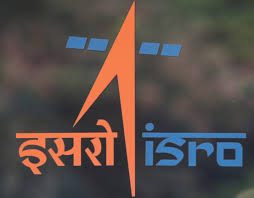
Here we go: #update #thread #Space
@isro, as part of its preparations for India’s first human spaceflight mission — #Gaganyaan — is planning seven integrated air-drop tests (IADTs) of simulated crew modules, which will validate the parachute system. 1/n
@isro, as part of its preparations for India’s first human spaceflight mission — #Gaganyaan — is planning seven integrated air-drop tests (IADTs) of simulated crew modules, which will validate the parachute system. 1/n
https://twitter.com/Chethan_Dash/status/1526924138178174976

While some tests in the run-up to these 7 tests have been completed, IADTs will be crucial before moving ahead to the next phase. The space agency has already completed the preliminary structural design of the crew seat assembly, the IADT structure design of the crew module. 2/n
“For validation of the parachute system, seven IADTs are planned with a simulated crew module, maintaining external configuration similar to flight… 3/n
…Prior to the first IADT, parachutes were validated with drop tests in AN32/IL76 aircraft and sequence of unfurling ops with load for the main chute has been verified,” according to @isro. 4/n
The first air-drop test for the main parachute was completed using the AN-32 aircraft on Oct 10, 2021, following which the second air-drop test with four-tonne mass was carried out using an IL-76 aircraft on Nov 11, 2021. 5/n 

Isro has said that the performance of the “main parachute and reefing line cutter were satisfactory” in both tests. 6/n
“...Development tests of various mortars (ACS, drogue and pilot) & pyros like parachute releaser unit (PRU), apex cover separation pyro thrusters, crew module(CM)-service module (SM) umbilical pyro bolt, amplifier pyro bolt for CM-SM separation are completed,” Isro added. 7/n
The crew module for trial sortie with Chinook helicopter has been realised and the first development test of drogue mortar with drogue chute has been completed. 8/n
The crew module’s IADT structure design and analysis has been completed and presented before a competent panel, whose suggestions and recommendations are now being studied. The process of procuring raw materials needed for the IADT structure has also begun. 9/n
“Preliminary design of the G1 (first uncrewed mission) crew seat assembly has been completed and preliminary structural design of the crew seat assembly for H1 (first crewed mission) is in progress… 10/n
…Occupant safety analysis is in progress, crew seat system for human mission has been finalised with required spine angle and attenuator attachment locations inside the CM structure,” Isro added. 11/n
Further, Isro has proposed a triple-redundant avionics system for uncrewed and crewed missions, while dual-redundant avionics are configured for the test vehicle-demonstration (TV-D) mission crew module. 12/n
“Avionics are accommodated inside CM. Harness, integration mock-ups/fixtures for handling realised. For crewed mission, CM’s inner structure is pressurised & addl systems like ECLS, green propulsion, viewports, ingress/egress side hatch & forward hatch configured,” Isro said. n/n
• • •
Missing some Tweet in this thread? You can try to
force a refresh












